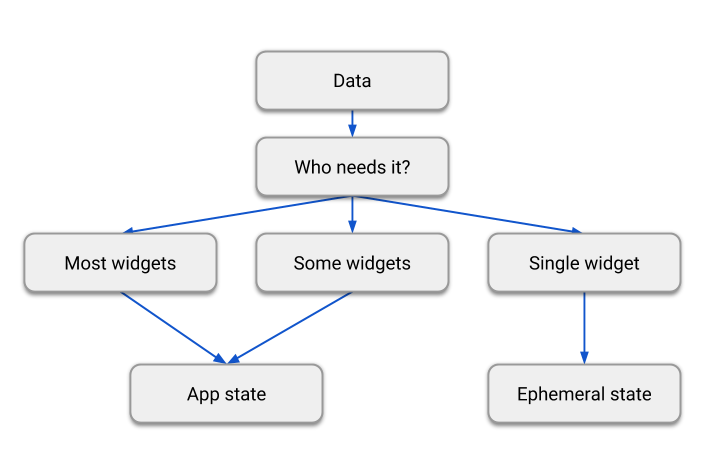-
Notifications
You must be signed in to change notification settings - Fork 37
200 Architecting a Flutter App
Page Table of Contents
The Most central topic of architecting a Flutter app [1] is State Management [12]. Where does my State sit, who needs access to it, and how do they access it? This chapter aims to answer those questions. You will learn about the two types of State, you will be introduced to the three most popular State Management Solutions and you will learn one of those State Management Solutions (BLoC [7]) in detail. You will also learn how to use the BLoC State Management Solution in a clean and scalable four-layered architecture.
I want to differentiate these two terms. Within the Flutter community, State Management and Architecture are often used synonymously, but I think we should be careful to do so. State Management is, as the name indicates, managing the State of an application. This can be done with the help of a technology or a framework [12], [55]. Architecture, on the other hand, is the overarching structure of an app. A set of rules that an app conforms to [56]. Any architecture for a Flutter application will have some sort of State Management, but State Management is not an architecture by itself. I just want you to keep this in mind for the following chapters.
The Flutter documentation [12] differentiates between two types of State: Ephemeral State & App State. Ephemeral State is State that is only required in one location IE inside of one Widget. Examples would be: scroll position in a list, highlighting of selected elements or the color change of a pressed button. This is the type of State that we don’t need to worry about that much or in other words, there is no need for a fancy State Management Solution for Ephemeral State. We can simply use a Stateful Widget with some variables and manage Ephemeral State that way [12]. The more interesting type of State is App State. This is information that is required in multiple locations/by multiple Widgets. Examples would be user data, a list of favorites or a shopping cart. App State management is going to be the focus of this chapter.

Figure 12: Ephemeral State vs App State decision tree [12]

This Guide is licensed under the Creative Commons License (Attribution-NoDerivatives 4.0 International)
Author: Sebastian Faust.